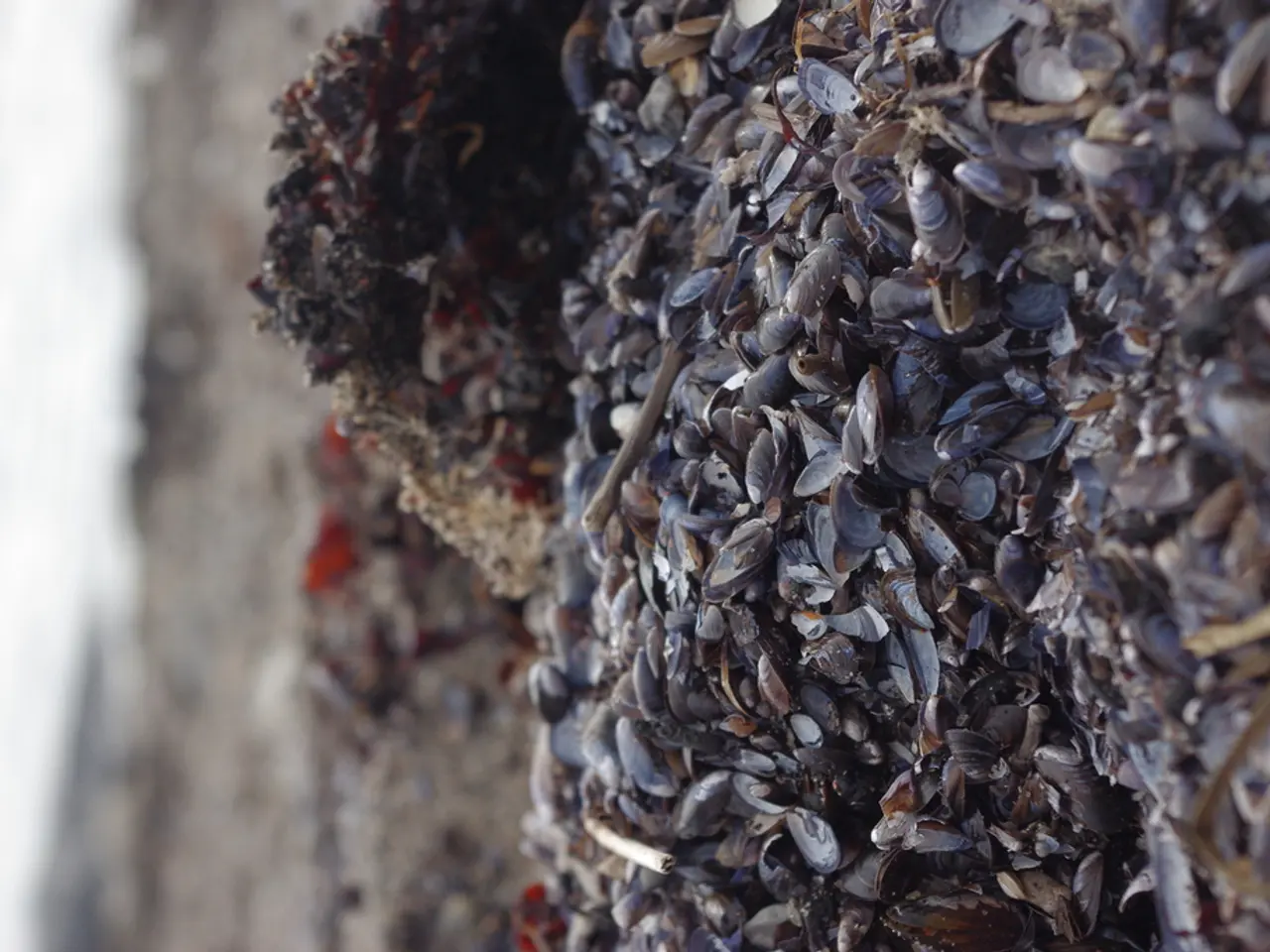Scientists in British Columbia uncover a novel virus in oysters farmed in the Pacific during a widespread disease outbreak.
================================================================
In a significant discovery for the shellfish industry, scientists at the University of British Columbia have uncovered a previously unknown virus, Pacific Oyster Nidovirus 1 (PONV1), in farmed Pacific oysters during a mass die-off in B.C. in 2020.
The virus, which belongs to the nidovirus group, is one of the largest RNA genomes found to date and has been linked to mass mortality events in farmed Pacific oysters. This discovery raises concerns about disease management in oyster farming and highlights the need for cautious biosecurity measures.
PONV1 was detected through RNA analysis in 20 dead and dying farmed Pacific oysters during the mass die-off, but it was not found in healthy wild oysters. This suggests a strong link between PONV1 infection and oyster mortality in aquaculture settings.
However, researchers note that oyster death is likely influenced by multiple factors and environmental stressors beyond just the virus. As such, investigating mass die-offs in oysters is important to determine the causes of disease, as prevention is not possible until the causes are known.
The nidovirus found in Pacific Oysters is only the second nidovirus known to infect bivalves like oysters. PONV1 has one of the largest RNA genomes on record, potentially encoding more genes or protein domains, which may enhance its interaction with oyster hosts and enable greater genetic flexibility and host adaptation.
This discovery underscores the limited understanding of viruses infecting invertebrates, particularly oysters. The research team proposes to name PONV1 Megarnavirus gigas, or 'large RNA virus giant', and has also proposed a new family, Megarnaviridae, or 'large RNA viruses'.
The potential impact on farmed Pacific oysters is substantial, as PONV1 appears to be associated with mass mortality events, which threaten the sustainability of oyster aquaculture. This has led experts to emphasize caution when moving juvenile oystlers between hatcheries internationally and nationally, to prevent spreading the virus.
Further research and development of rapid diagnostic tests are needed to confirm the role of PONV1 in oyster deaths and to monitor oyster health effectively. The research, published in the Proceedings of the National Academy of Sciences, is not a cause for alarm, but a meaningful step forward in advancing our understanding of oyster health and supporting the long-term sustainability of shellfish aquaculture.
Dr. Kevin Zhong, research associate in the UBC Department of Earth, Ocean and Atmospheric Sciences (EOAS), was the first author of the paper. Dr. Curtis Suttle, professor of EOAS, botany, microbiology and immunology, at the Institute for the Oceans and Fisheries, was the senior author. The researchers collected 33 oysters from two farms in B.C. during the mass die-off in 2020, as well as 26 wild oysters from 10 nearby sites.
It is important to note that PONV1 is specific to oysters, so humans are not at risk of contracting the virus. Pacific oysters are the most widely farmed shellfish worldwide, with an estimated value of $16 million in 2023. This discovery serves as a reminder of the importance of continued research and vigilance in understanding and managing diseases in aquaculture.
The finding of PONV1, a newly discovered virus in farmed Pacific oysters, highlights the significance of health and wellness in the aquaculture industry, particularly in relation to environmental-science studies. This discovery underscores the need for further research in the field of medical-conditions affecting aquatic life, to enhance our understanding of viruses and develop preventive measures.




